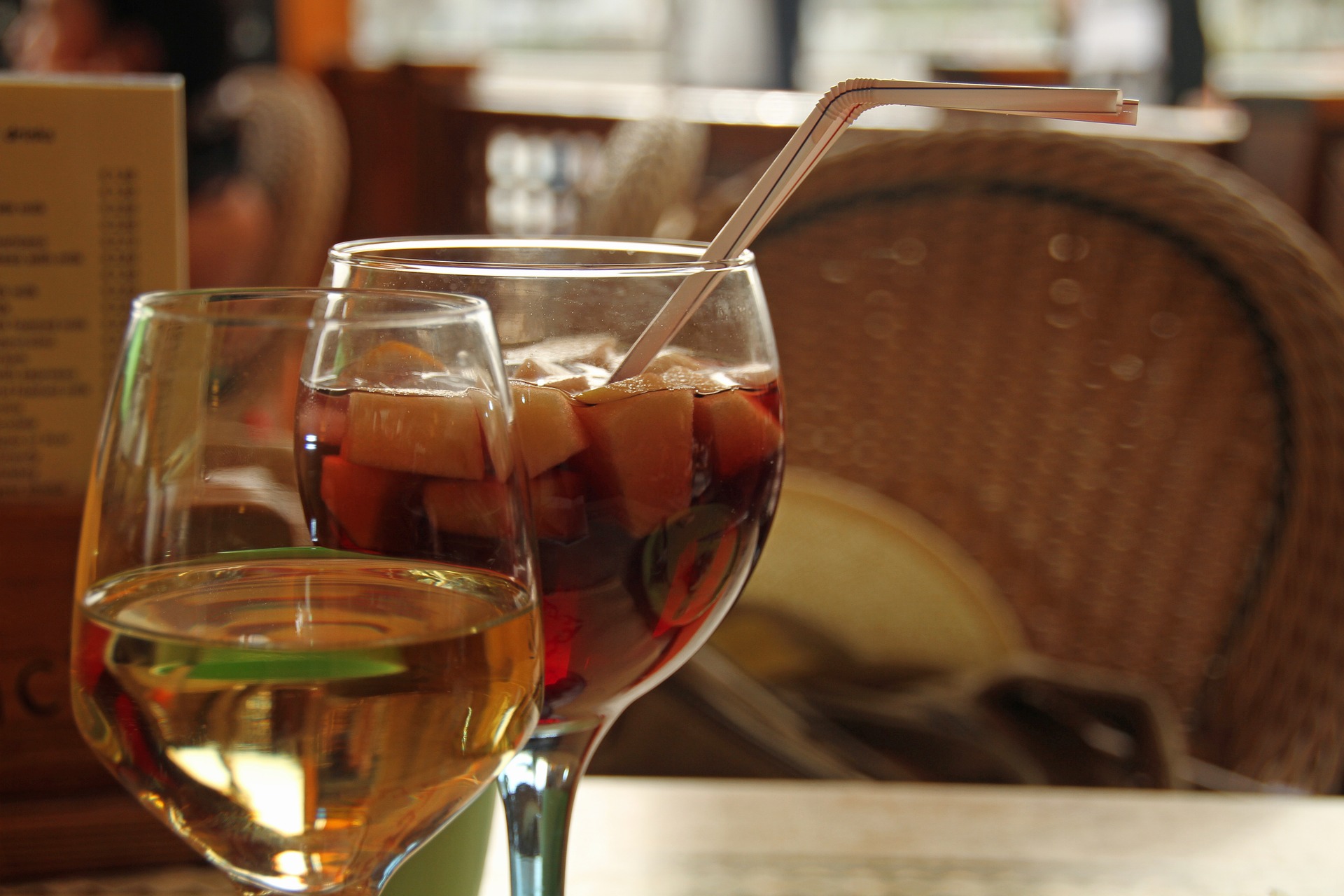We’ve explored the background of the Bloody Mary – let us check out the history of Sangria, another fun cocktail.
- Sangria: an iced drink, typically made with red wine, sugar, fruit juice, soda water, and spices, and containing fruit slices.
Essentially, Sangria is a ride wine punch.
When I think of Sangria I picture present day American housewives sitting on a back porch, possibly under a large table umbrella. Their kids are out of school for the summer. The women watch them play. And, they sip their Sangria, occasionally picking fruit out to munch on.
Not surprisingly, Sangria as we know it today originated in Spain, but it did establish solid American roots early on.
Backing up a bit, wine itself has been traced back as far as 6,000 BC, coming to Europe in 200 BC. Around that time, Spain became home to grape vineyards and wine production. Initially, all red wines were called “sangria,” a term meaning “blood.”
Wine was an important commodity when water was often contaminated. With wine, the alcohol killed any bacteria. Everyone from children to the elderly drank wine, and they often added fruits to give the beverage an extra kick.
Spices began being added to wines during the Middle Ages in Europe. One of the earliest versions of Sangria was a Claret Cup, a drink that consisted of red wine, brandy, and spices. Claret Cup Punch was enjoyed during the 1700s and 1800s.
The addition of cut or sliced fruit into Sangria likely happened in the Andalusia region of Southern Spain; this is also where gazpacho originated.
Also during the 19th century, Americans (and the British) made their own version of Sangria, Sangaree. Sangaree consisted of port, sherry, or Madeira; sugar; water; and nutmeg. However, Sangria wasn’t officially introduced to our country until the 1964 World Fair.
There are numerous varieties of Sangria today. Traditionally, it should be prepared with a Rioja wine, although a Bordeaux would work well.
There is also a Sangria Blanco, made with white wine.

I like sangrias but not with tons of fruit.
They taste especially good in St. Augustine, FL.